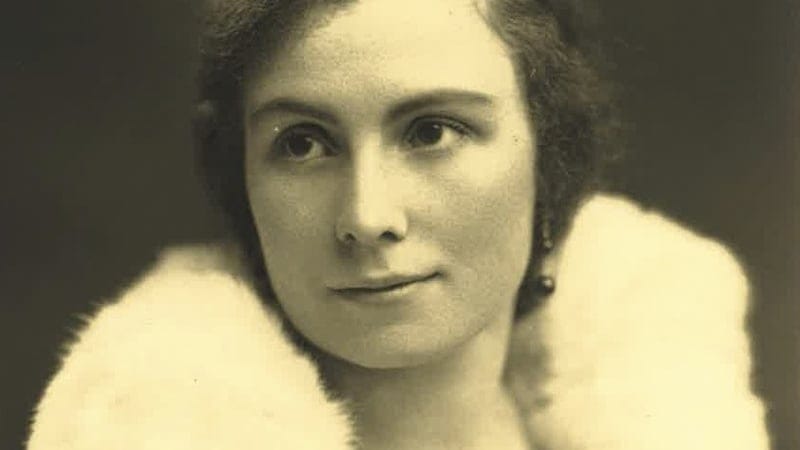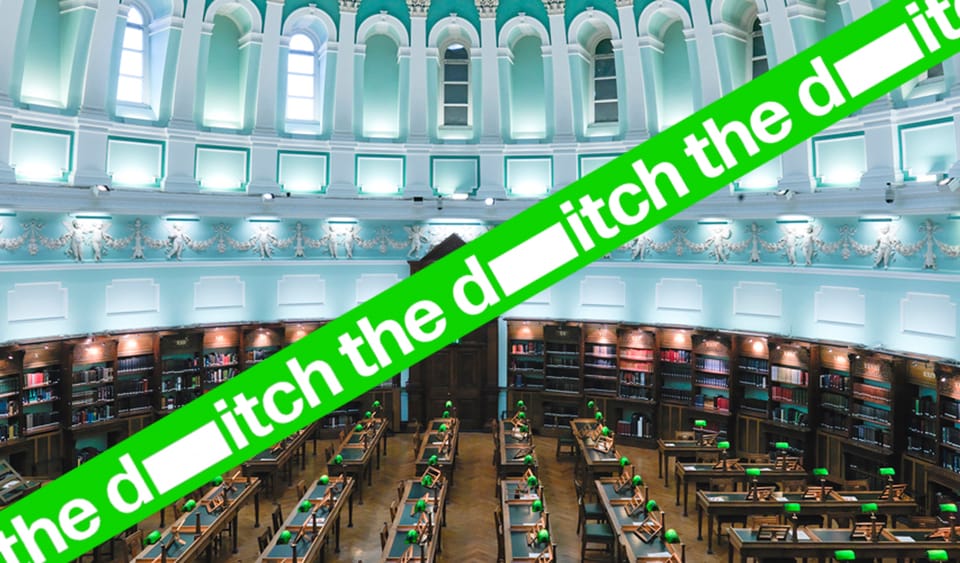By Róisín O’Shea. Originally published in The Ditch's State Failures.
Freda Laughton was a poet, children’s author, short story writer and artist. She was the first woman in Northern Ireland to have a poetry collection accepted by an established publisher. She is the only Irish poet whose work spans both the Second World War and the Troubles. She wrote about one-night stands way back in the 1940s. She brought domestic and feminine reality into poetry four decades before Eavan Boland. Her name appeared in magazines and event flyers alongside those of Patrick Kavanagh, Robert Greacen and John Hewitt. But you’ve probably never heard of her.
Laughton’s biography is difficult to piece together – a side effect of the neglect of her work is that there has been little interest in her life. As recently as five years ago, the best anyone could do was Freda Laughton, 1907-?.
Since then, Emma Penney’s research has uncovered some reliable details and a skeleton biography has been compiled: born Winnifred Adeline Marshall in Bristol in 1907, Laughton moved to Belfast at age 25 with her first husband but remarried in the 1930s and moved to Sandycove in Dublin while her second husband (a military man) was stationed abroad. This was her most productive period in terms of published material – like many mid-century women, not having a husband at home to take care of gave her the freedom to pursue her own interests. She was active in Dublin’s poetry scene and regularly published poems in The Bell magazine. In 1944, she won The Bell’s prize for Best Poem of the Year.
In 1945 her poetry collection A Transitory House was published by Jonathan Cape. The work was well-received by critics, who called it “forcible and exciting” (The Observer) and “sensuous, sensitive and delicately shaped” (The Church of Ireland Gazette). Her powerful poem The Bombed House was described as “an essay in shock-annotation” (Time and Tide).
But just as Laughton was gaining momentum, she disappeared from the literary scene. Her husband had come home in poor health, so she retired with him to rural Down and seems to have stopped writing so that she could care for him. As the temporary freedom that wartime had given so many women came to an end, the weight of her domestic role took over much of Laughton’s daily existence. She published very little poetry for the rest of her life.
It seems likely that the demands placed on Laughton as a woman in the post-war period contributed to her near total absence from historical record. But why is the little work we have not better known?

It has been omitted from almost every significant anthology of Irish poetry. The most glaring exclusions have been from The Oxford Book of Irish Verse (1958), The Field Day Anthology (1990 and 2002) and The Cambridge Companion to Irish Poets (2017). The Field Day exclusion stings especially: there was such criticism of the underrepresentation of women poets in the first three volumes that two more (this time women-only volumes) were produced to make amends. These volumes came to more than 3,000 pages. Not one has a piece by Laughton.
There is no single answer as to why her work has been ignored. She and her work just seemed to clash with prevailing norms.
This is true in terms of taste: Fired! Irish Women Poets and the Canon note in the Preamble to the Pledge (written the year after Laughton was excluded from the Cambridge Companion) that modernist and avant-garde women poets are continually underrepresented in Ireland.
It is true aesthetically: the newness and variety of Laughton’s work conflicted with the hangover ideals of the Celtic Revival, which only permitted a narrow style of Irish poetry.
It is true morally: in her own lifetime, Laughton’s work was criticised for being dangerous and immoral. The Irish Times published a letter to the editor expressing alarm at the association of pregnancy with witchcraft and paganism in her poem The Woman with Child.
And it is true politically: Anne Mulhall has said Laughton has been cast aside because her work didn’t neatly cohere with popular Irish nationalist culture. Seán Ó Faoláin lumped Laughton in with all the Irish writers he saw as cowardly, insipid and un-Irish – ignoring the intensity of place in her work, which is imbued with life in Dublin, Belfast and the Northern Irish countryside.
Ignoring her this long means that the credit she is due has almost always been paid elsewhere and her influence overlooked.
There are striking similarities between some of her poems and those of John Montague and Seamus Heaney, written twenty years later, suggesting that these figures read and admired her work. Compare Montague’s famous line “Like dolmens round my childhood, the old people,” with Laughton’s poem Childhood, which opens, “Among the staring monoliths of relatives…”; or Heaney’s Personal Helicon with Laughton’s Now I am a Tower of Darkness, which not only share subject matter and imagery but also nearly identical structures and first lines.
Feminine sensuality, identity, and libido in Irish poetry are almost always seen as being pioneered by women like Eavan Boland and Nuala ní Dhomhnaill – despite the fact that Laughton wrote about them forty years earlier. Laughton deals time after time with motherhood, the domestic and other aspects of women’s lives. When to my Serene Body is an erotic poem, celebrating female sexuality. “The skin with its silken kiss / Moves creamily over skin / Into a dream that is / A tower of the skin’s thought.” Poems such as The Welcome, The Awakening and Rain on a Cottage Roof elevate domestic comforts to the art. It is an undermining of history that Boland and ní Dhomhnaill are household names taught in schools across Ireland, while Laughton, having paved their way, remains almost completely unknown.
There have been recent attempts to bring her work to the public: Lucy Collins’s Contemporary Irish Women Poets and Heather Imgman and Clíona Ó Gallchoir’s A History of Modern Irish Women’s Literature both remember Freda. However her work has never been reprinted (barring a recently published Italian translation), and original copies are all but impossible to find – Jonathan Cape, like other publishing houses, was subject to wartime rationing and shortages in the 1940s and so the print run of A Transitory House was limited.
Republishing Laughton’s collection would be a first step in her recovery but it is far from the last. It had been presumed that, after caring for her unwell husband, Laughton either stopped writing altogether or else anything she did write ended up as twists of wastepaper used to light her front room fires. This was not the case.
Laughton never stopped writing: throughout her life, right up to her death in 1995, she produced short story collections, essays, children’s literature, poems and even a second book of poetry entitled Seasons of Watching. She scribbled ideas on the backs of envelopes, captured fleeting observations on tiny scraps of paper, filled notebook after notebook after notebook. And she kept all of it, neatly labelled and catalogued, in a personal archive.
I have the honour of working with Emma Penney – my lecturer at ATU Sligo and the woman who traced Laughton’s family and first learned about the archive – on these artefacts. Sifting through these boxes of paper, what stands out most is Laughton’s meticulousness. Every dream she had for fifty years is written down, interpreted and catalogued. Decades of letters and diaries give us a way into her poems: we know the very house, the very road, the very train station she was writing about. Encountering her work like this feels like meeting a ghost, as though she might breathe through these yellowed pages. It is haunting how much there is, how much we have missed.
Laughton catalogued her work with her legacy in mind. She wanted it to be read one day. The woman kept everything, and it’s just waiting in boxes. We have an almost miraculous second chance to rediscover her work and to delve into the life, world and mind of a forgotten Irish writer. Let this be a call to Irish publishers to support a reprinting of A Transitory House and the publishing of a Collected Works, as well as a call to all of Official Ireland to remember Freda.
Róisín O’Shea lives in north Sligo with her husband and their cat, Camilo Cienfuegos O'Shea.


